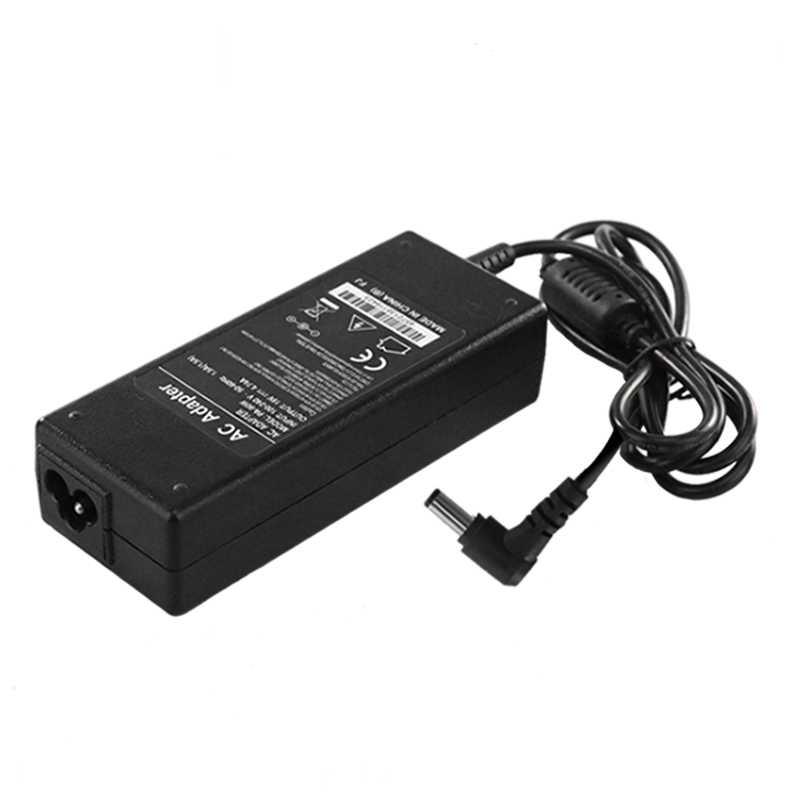
Privacy statement: Your privacy is very important to Us. Our company promises not to disclose your personal information to any external company with out your explicit permission.
Chargers/power adapters produced by regular manufacturers have a nameplate with indicators such as power, input and output voltage and current. It is worth noting the input voltage range. Generally speaking, the charger/power adapter with an input voltage of 110V-240V can be used universally and is suitable for all countries and regions.

Common faults and maintenance of charger/power adapter:
1. Line fault
Line faults, including power cord damage and power failure, poor contact oxidation, etc. Focus on checking whether the input and output lines are energized.
If it is a line failure, it can be solved by replacing the power cord.
2. The output voltage is too high
The output voltage is too high generally comes from the voltage regulation sampling and voltage regulation control circuit. In the closed control loop composed of DC output, sampling resistance, error sampling amplifier such as TL431, optocoupler, power control chip and other circuits, any one of the parts will cause the output voltage to rise.
3. The output voltage is too low
The following are the main reasons for the low output voltage:
(1)Switch Power Supply load short circuit failure (especially DC/DC converter short circuit or poor performance, etc.), at this time, first disconnect all loads of the Switching Power Supply circuit, check whether the switching power supply circuit is faulty or the load circuit is faulty. If the load circuit is disconnected and the voltage output is normal, it means that the load is too heavy; or it is still abnormal, indicating that the switching power supply circuit is faulty.
(2)The output voltage filter capacitor or rectifier diode failure, etc., can be judged by the replacement method.
(3) The performance of the switching tube is reduced, which causes the switching tube to fail to conduct normally, which increases the internal resistance of the power supply and reduces the load capacity.
(4)4 Poor switching transformer not only causes the output voltage to drop, but also causes insufficient excitation of the switch to damage the switch.
The 5300V filter capacitor is bad, resulting in poor load capacity of the power supply, and the output voltage will drop as soon as the load is connected.
4. Insurance burned out or blown up
Mainly check the rectifier bridge, each diode, switch tube and large filter capacitor on 300 volts and other parts. The fuse and blackening of the fuse may also be caused by a problem with the anti-interference circuit.
In particular, it should be noted that the fuse burns due to the breakdown of the switch tube, which usually burns out the power control chip and the current detection resistor. The thermistor is also easily burnt out together with the fuse.
The common failures and repairs of chargers/power adapters are here. In addition, we should pay attention to the daily maintenance and maintenance of chargers/power adapters, which can reduce the occurrence of failures and effectively extend the service life.
5. The fuse is normal and there is no output voltage
The fuse is normal, and no output voltage indicates that the switching power supply is not working or has entered a protection state. The first step is to check the value of the start voltage of the start pin of the power control chip. If there is no start voltage or the start voltage is too low, check whether the external components of the start pin and the start resistance leak.
If the power control chip is normal, the fault can be quickly found through the above monitoring. If there is a starting voltage, measure whether there is a high-level or low-level transition at the output of the control chip at the moment of startup. If there is no transition, it means the control chip is damaged, the peripheral oscillation circuit component is damaged or the protection circuit is faulty. Check the chip and peripheral components one by one; if it is jumping, most of the cases are bad or damaged switch.
Best regards,
Ada Zheng
LET'S GET IN TOUCH

Privacy statement: Your privacy is very important to Us. Our company promises not to disclose your personal information to any external company with out your explicit permission.

Fill in more information so that we can get in touch with you faster
Privacy statement: Your privacy is very important to Us. Our company promises not to disclose your personal information to any external company with out your explicit permission.